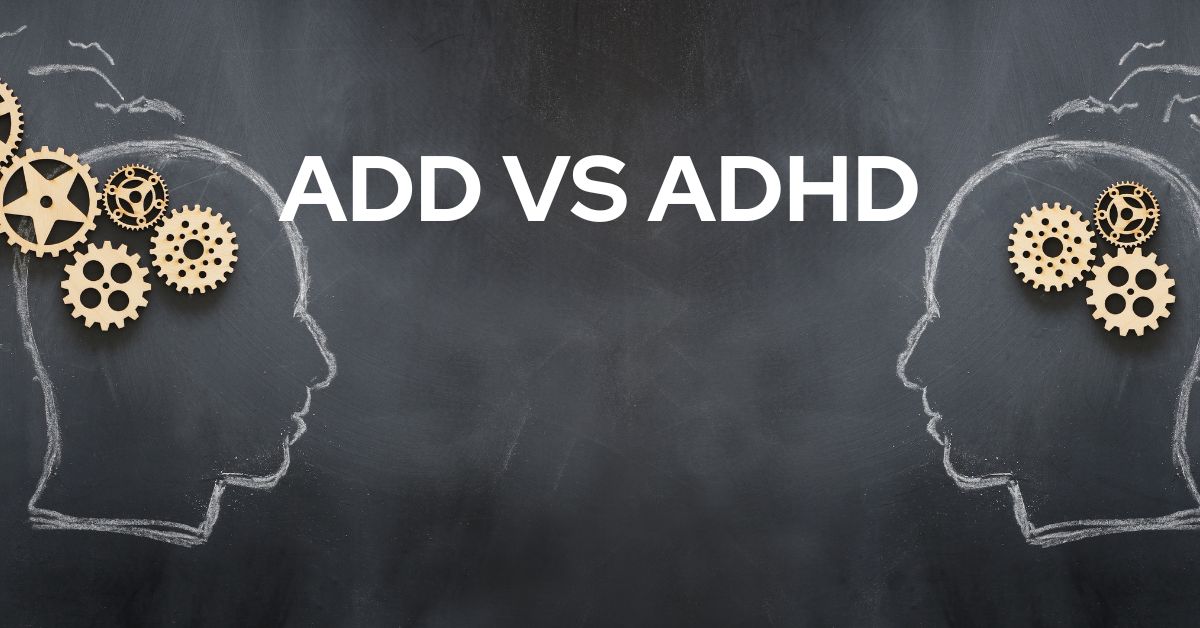What is ADD?
ADD, or Attention Deficit Disorder, is an outdated terminology for ADHD that the American Psychiatric Association no longer recognizes. Attention Deficit Disorder was used to describe attention deficit problems in children between 1980-1987. It stressed children’s attention and concentration difficulties without attaching the hyperactivity symptoms.
ADD was first diagnosed in 1798 by a Scottish Doctor, Sir Alexander Crichton, who laid the framework for the interpretation of mental disorders and provided fertile intellectual soil for the development of later associationistic models of higher brain function in human beings. Mental health problems were not organized into an umbrella term during that period. It was only in the 1960s that the American Psychiatric Association formally recognized the problem and gave it medical terminology.
The name ADD / Attention Deficit Disorder was mentioned in the Diagnostic and Statistical Manual of the handbook used by healthcare professionals in the United States and the rest of the world as an authoritative guide to the diagnosis of mental disorders that contains descriptions, symptoms and other criteria for diagnosing mental disorders and that is currently in its Fifth Edition.
In DSM-II, ADD was mentioned as a Hyperkinetic Reaction of Childhood and mention was made of the excessive motor activity caused by the disorder. In DSM-III, published in 1980, the term ADD was added in the manual that reconceptualized the mental health issue and focussed on the problems of Attention, Impulsivity. In DSM-III, the American Psychiatric Association described the terminology ADD( Attention Deficit Disorder as a mental health disorder and divided it into subtypes; ADD with hyperactivity and ADD without Hyperactivity.
These subtypes of ADD were used till 1987 till the introduction of the fourth edition of DSM, i.e. DSM-IV, which removed the subtypes and introduced the term ADHD or Attention Deficit Hyperactivity Disorder.
What is ADHD?
In DSM-IV, ADHD, previously referred to as ADD with Hyperactivity, was given a formal term and further divided into three categories: Inattentive, Predominantly Hyperactive-Impulsive, and Combined.
People with ADHD of the Inattentive type are easily distracted, have trouble paying attention to details and have problematic organization skills. These people can have a high IQ but still need help to finish tasks and forget routine chores while having trouble staying focused for a long time.
Hyperactive-Impulsive ADHD in a person is characterized by a struggle to sit still and focus and generally impulsive behaviour with fidgety tendencies and excessive talking habits. What makes it different from other forms of ADHD is the heightened impulsive behaviour, excessive physical movement, and acting without thinking about the consequences.
Combined type ADHD occurs when an individual has both inattentive and hyperactive-impulsive symptoms. Fidgety behaviour, struggling to follow instructions, inability to finish a task, forgetting events and things, appearing not to listen when spoken to, and impatient manner with the tendency to interrupt conversations are all characteristics of Combined ADHD.
People sometims use ADHD interchangeably with ADD to refer to ADHD without hyperactivity. Some people even use the term ADD to refer to Inattentive type ADHD without the symptoms of hyperactivity which is incorrect as ADD terminology was used 30 years back and is currently not accepted by the American Psychiatric Association or mentioned in the current DSM-6 manual. Continuing to use the term ADD can prove confusing and lead to misdiagnosis.
Here is a tabular form of differences between ADD and ADHD that will make it easy to understand them better
Difference between ADD and ADHD
| Category | ADD | ADHD |
| Full form | Attention Deficit Disorder | Attention Deficit Hyperactivity Disorder |
| Introduced in | 1980 | 1987 |
| Term used from | 1980- 1987 | 1987-till date |
| Dsm category | DSM – III | DSM – IV |
| Subcategories | 2- ADD with hyperactivity and ADD without Hyperactivity | 3- Inattentive ADHD, Hyperactive ADHD and Combined ADHD |
| Inclusion Criteria | Children | Children and Adults |
| Treatment | Medications | Medications, behaviour therapy, Counseling |
| Chief Focus | Attention, Impulsivity | Attention, Impulsivity, Hyperactivity |
| triggers | Not specified | Stress, poor sleep, foods |
| Current Status | Not recognized by APA | RecognizedRecognized by APA |
Current Status of ADHD
The recent revisions to DSM-5 released by the American Psychiatric Association in March 2022 form the latest update to ADHD nosology. These revisions include modifications to each of the ADHD diagnostic criteria from A-E.
A. Persistent pattern of inattention and/or hyperactivity-impulsivity that interferes with functioning or development, as characterized by (1) and/or (2):
B. Several inattentive or hyperactive-impulsive symptoms were present prior to age 12 years.
C. Several inattentive or hyperactive-impulsive symptoms are present in two or more settings (e.g., at home, school, or work; with friends or relatives; in other activities).
D. There is clear evidence that the symptoms interfere with or reduce the quality of social, academic, or occupational functioning.
E. The symptoms do not occur exclusively during the course of schizophrenia or another psychotic disorder and are not better explained by another mental disorder (e.g., mood disorder, anxiety disorder, dissociative disorder, personality disorder, substance intoxication or withdrawal
And have added two ADHD modifiers to it. Criterion A is added with examples of ADHD manifestation in adolescence and adulthood. Criterion B has changed from the onset of symptoms and impairments before the age of 7 to the onset of symptoms before the age of 12. Criterion C has been changed from evidence of impairment to evidence of symptoms in two or more settings. Criterion D now states that functional impairments only need to reduce the quality of social, academic or occupational functioning instead of requiring it to be clinically significant. Criterion E now does not include Autism Spectrum Disorder as an exclusionary Diagnosis. The previously referred ADHD types are now referred to as ADHD presentations. The purpose of the modifiers is so that the severity of ADHD, i.e. Mild, Moderate or Severe, can be specified, and ADHD can be termed as “in partial remission” if the diagnostic criteria are not entirely met.
| No. | Criterion | DSM-5 | DSM-IV-TR |
| 1 | – | ADHD is now placed in Neurodevelopmental disorders reflecting brain development correlates to ADHD | ADHD was a chapter in DSM-IV alongside other diagnoses usually first made in infancy, childhood and adolescence ( eliminated in DSM-5 |
| 2 | A | Children should have six or more symptoms of the disorder. A symptom threshold change has been made for older teens and adults with a cutoff of five symptoms instead of six, both for inattention and hyperactivity and impulsivity. Examples added to the criterion of how symptoms may present in adolescents and adults, thus elaborating criteria to make them better applicable to adults | No separate provision existed for adults |
| 3 | B | The broadened age range at the onset of symptoms to 12 yearsSymptom presence is emphasized instead of impairment | The age of onset of symptoms was seven years Symptom presence and impairment were required |
| 4 | C | Evidence of symptoms in two or more settings | Evidence of impairment in two or more settings |
| 5 | D | Functional impairment needs to reduce the quality of social, academic or occupational functioning | Functional impairment requires it to be clinically significant |
| 6 | E | Comorbid diagnosis with autism spectrum disorder is now allowed | Autism Spectrum Disorder needed to be excluded from the diagnosis of ADHD |
| Other Changes | Three subtypes are now referred to as presentations. The severity of the disorder was mild, moderate and severe and can be specified. | Three types of ADHD were referred to as subtypes. The severity was not specified |
Reference:
- childmind.org/article/what-is-the-difference-between-add-and-adhd/#:~:text=ADHD%20either%20way.-,What%20is%20the%20difference%20between%20ADD%20and%20ADHD%3F,diagnosis%20is%20ADHD%20either%20way.
- www.ncbi.nlm.nih.gov/pmc/articles/PMC3955126/
- www.additudemag.com/history-of-adhd/#:~:text=ADHD%20wasn’t%20called%20ADHD,understanding%20of%20this%20complex%20disorder.







